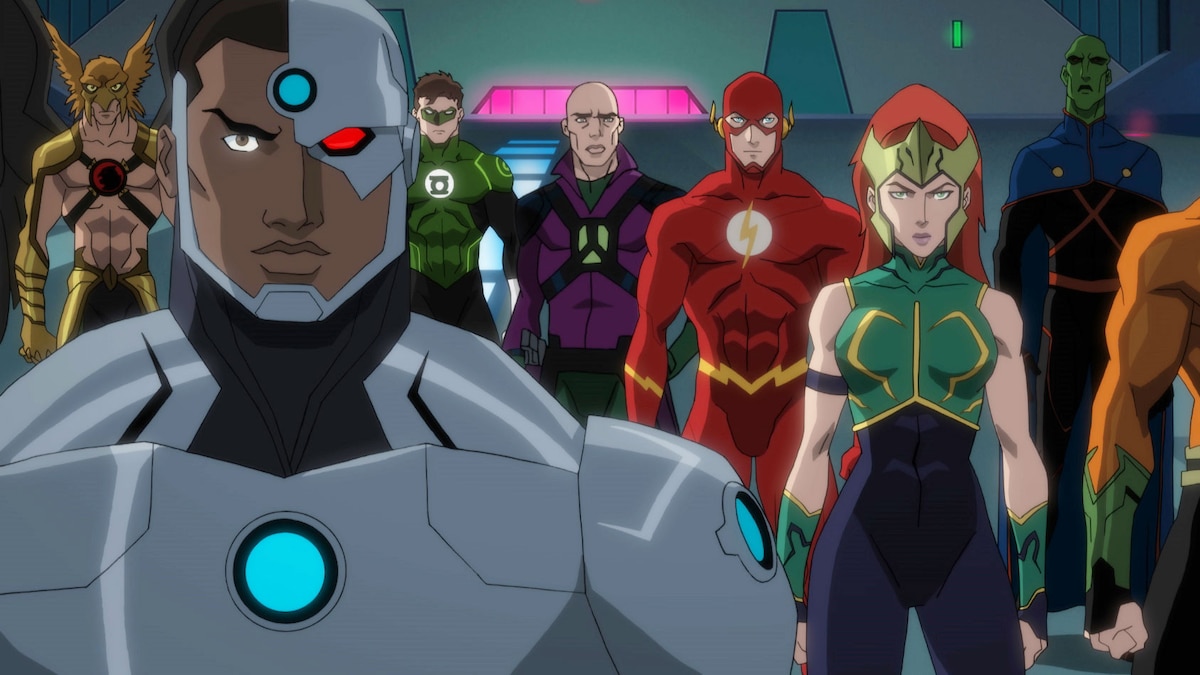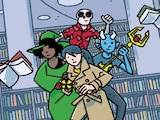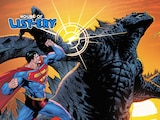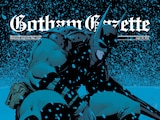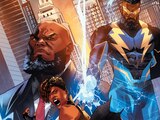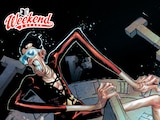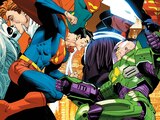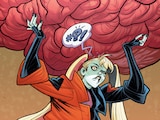When I wrote DCComics.com’s article announcing Justice League Dark: Apokolips War, I didn’t realize it was going to be the last movie in the “DC Animated Movie Universe,” Warner Bros. Home Entertainment’s just-wrapped series of interconnected animated films. In fact, the new movie played a very clear second fiddle to Superman: Red Son in my article. Despite the Darkseid-teasing title, at the time there was no indication that Apokolips War was anything more than a sequel to 2017’s Justice League Dark animated movie. Cool, but certainly not worth devoting most of the article to.
How wrong I was.
I’m still not sure why Apokolips War is branded a Justice League Dark movie. With the exception of John Constantine and Etrigan the Demon, the rest of the team is relegated to a series of cameo appearances. Plus, the movie features all of the animated universe’s superteams—the Justice League Dark, sure, but also the Justice League proper, Teen Titans and Suicide Squad. The truth is it’s really not important what the movie’s title is as much as what it represents—the culmination of the seven-year story that began in 2013 with the still-impressive Justice League: The Flashpoint Paradox.
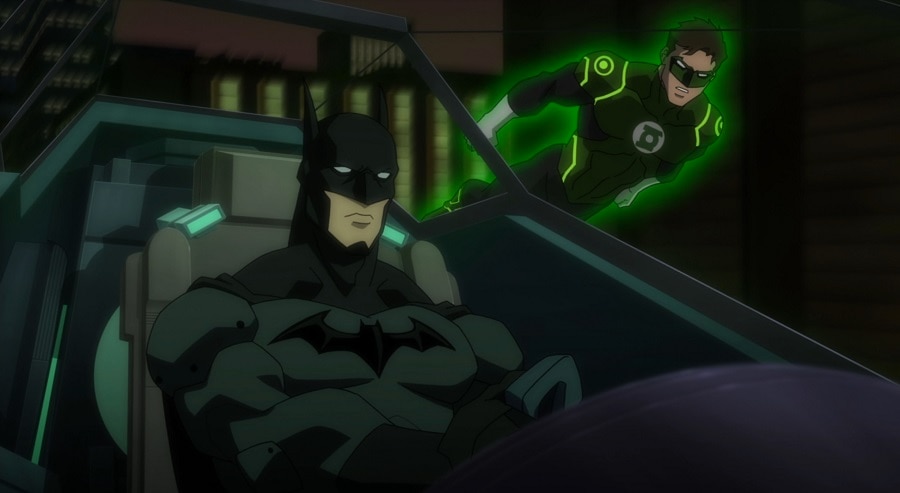
For those of you who don’t know, and as I always say, there’s NEVER any shame in not knowing, the DC Animated Movie Universe is made up of fifteen films: Justice League: The Flashpoint Paradox (2013), Justice League: War (2014), Son of Batman (2014), Justice League: Throne of Atlantis (2015), Batman vs. Robin (2015), Batman: Bad Blood (2016), Justice League vs. Teen Titans (2016), Justice League Dark (2017), Teen Titans: The Judas Contract (2017), Suicide Squad: Hell to Pay (2018), The Death of Superman (2018), Reign of the Supermen (2019), Batman: Hush (2019), Wonder Woman: Bloodlines (2019) and Justice League Dark: Apokolips War (2020).
Shortly after the trailer for Apokolips War was released, I realized that it had been so long since I had seen some of the earlier animated movies that I had forgotten much of what they were about. In addition—and I realize this is near-blasphemy to DC animation fans—I hadn’t yet seen several of the more recent ones. So, considering how, like the rest of you, I was stuck at home and looking for fun things to do anyhow, I decided to binge the entire series, starting with The Flashpoint Paradox and ending with Apokolips War.
One of the things that makes this series of films unique is that while they all share a continuity, they also all standalone quite nicely. You can easily watch any movie within the series without having seen any of the other ones. However, there are plenty of moments that reward you if you have. At the end of Justice League: War, for example, Shazam suggests naming their newly formed superteam the “Super Seven,” a name that no one likes and that gets jokingly referenced in Justice League: Throne of Atlantis. Likewise, in Justice League Dark: Apokolips War, members of the Suicide Squad reveal that Amanda Waller has died from cancer, which is a cheeky nod to the plot and ending of Suicide Squad: Hell to Pay.
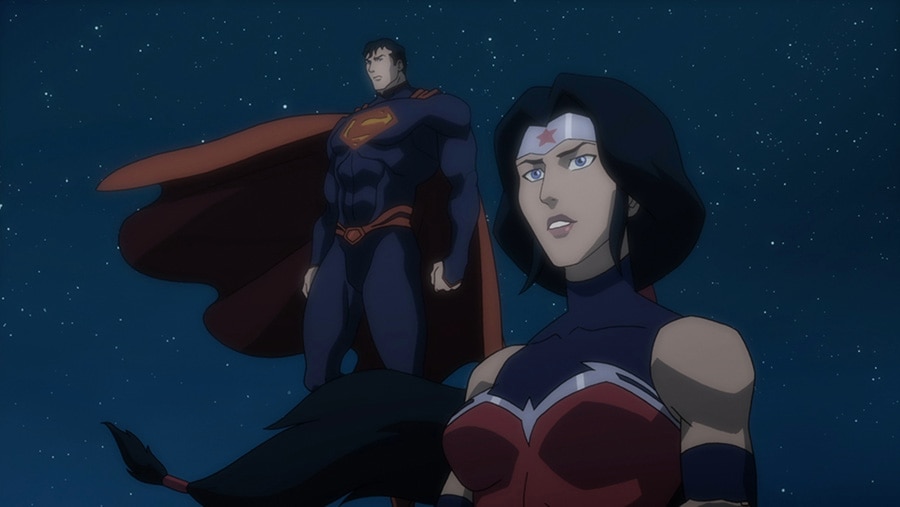
While the movies don’t exactly set up the subsequent films, at least not with any regularity, they do plant seeds that often grow over the course of later movies in wonderfully fulfilling ways. This is especially true when it comes to the relationships between the characters. In Justice League: War, Justice League: Throne of Atlantis and Justice League vs. Teen Titans, Superman is romantically involved with Wonder Woman (this reflects what was happening in DC’s comics at the same time). In his next appearance in 2018’s The Death of Superman, Superman is dating Lois Lane. This feels like the right creative choice, but to the writers’ and producers’ credit, Kal-El and Diana continue to acknowledge their past relationship, leading to a wonderful scene in Reign of the Supermen where Lois and Diana bond over their grief of the man they once loved.
All of the relationships in these movies evolve in very natural, believable and exciting ways throughout these films, but the absolute best example of this is the relationship between Bruce Wayne and Damian Wayne. Damian is introduced pretty early in the series, in 2014’s Son of Batman, and much like in the comics, he’s very hard to like at first. Voiced exuberantly throughout the series by Stuart Allan, Damian is impetuous, egotistical and violent, and Bruce isn’t always the best at being the patient, level-headed parent that a child like Damian probably needs. Their relationship is largely dysfunctional at first—there’s a reason the second movie with Damian is called Batman vs. Robin, after all—and to the series’ credit, that doesn’t change right away. In fact, by 2016’s Justice League vs. Teen Titans, Robin’s ability to function as part of a team has become so strained, Bruce sends him away to live with the Titans, seemingly for a few years.
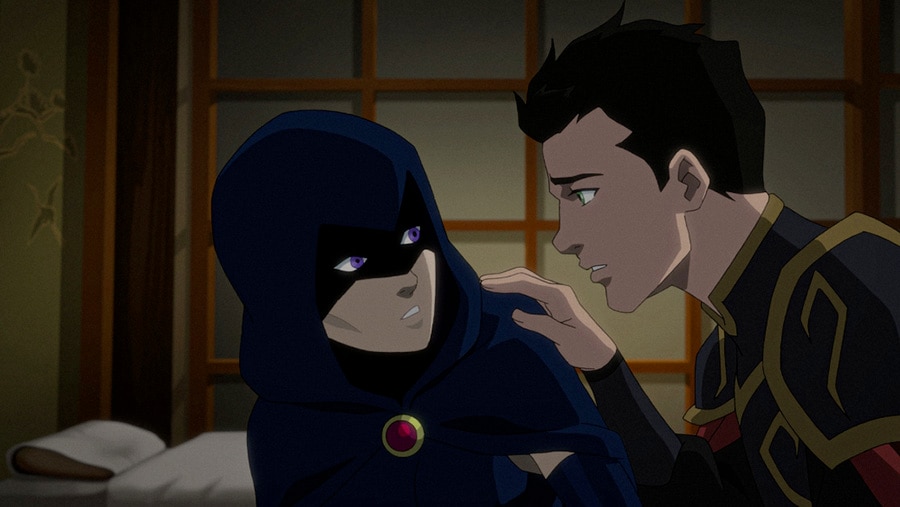
It winds up being a pretty smart move, and probably the best thing for both Bruce and Damian. With the Titans, Robin slowly learns what it means to be a part of a family. His relationship with Dick Grayson, once hugely competitive, strengthens into a nearly unbreakable bond. Damian forges a particularly close relationship with Raven—a relationship that doesn’t exist in the comics, yet makes perfect sense considering they both have a hugely destructive, powerful parent and constantly struggle to remain on the side of light. By allowing himself to open up to other young heroes, Damian gradually gains the ability to let his father in as well, something that comes to a wonderfully, poignant close in Justice League Dark: Apokolips War.
I wouldn’t dream of spoiling that moment for you, but I will say that it includes a reference to a key line in Batman vs. Robin—“Justice, not vengeance”—that nearly brought me to tears. And it’s something that I probably wouldn’t have even realized was a callback to that earlier movie if I hadn’t just rewatched it.
This may be the best argument in favor of binging the films of the DC Animated Movie Universe now that the series is complete. The relationship between Bruce and Damian is one of the most complex relationships in all of modern comics, and these fifteen films give the relationship the breadth and the space it needs to fully play out. It’s hard to imagine anything else outside of the comic page being able to provide that. If you’re a Batman fan, that alone is a reason why these movies are must-sees. And if you’re not, know that there’s plenty more to this universe than just that.
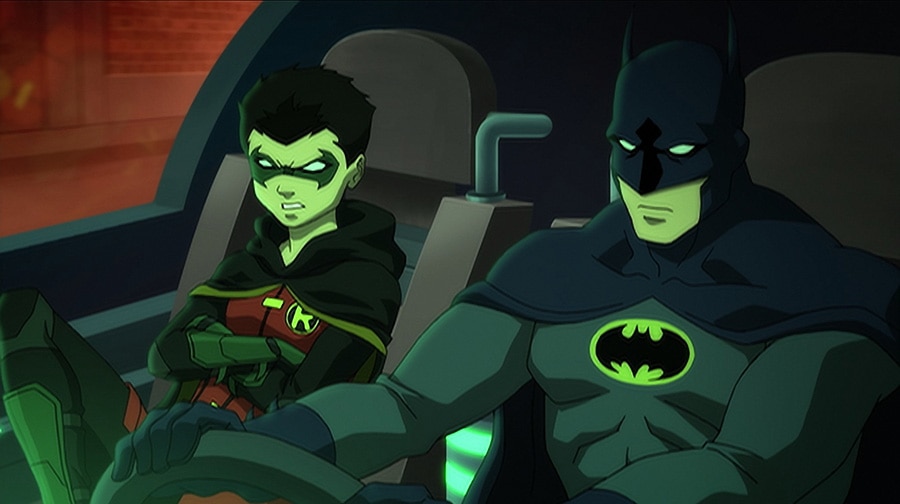
Watching all of the movies at once helped me to appreciate how having fifteen films to tell its story allowed this series to become much richer and more diverse than it ever could have been otherwise. It gave me the chance to spot and appreciate the evolution and growth we see within the characters as they move from film to film. It inspired some newfound appreciation of less prominent characters within the DC Universe, like Deadshot, Batwoman, Steel, Deadman and Silver Swan. It reminded me of the unlimited possibilities that shared continuity can bring, while making a good case for the power of standalone stories.
Not every hero’s journey ends happily in the DC Animated Movie Universe and the series can be a bit messy at times, but that’s just life. And what are superheroes if not an idealized reflection of that? We may not have superpowers or colorful costumes, most of us don’t have secret identities and our challenges aren’t likely to be world-ending, but may all of our stories end as satisfyingly as this one.
Justice League Dark: Apokolips War is now available on 4K Ultra HD, Blu-ray and Digital HD. The other films of the DC Animated Movie Universe are available for digital purchase and in many cases, for streaming on HBO Max.
Tim Beedle covers movies, TV and comics for DCComics.com, writes our monthly Superman column, "Super Here For...", and is a regular contributor to the Couch Club, our weekly television column. Look for him on Twitter at @Tim_Beedle.
